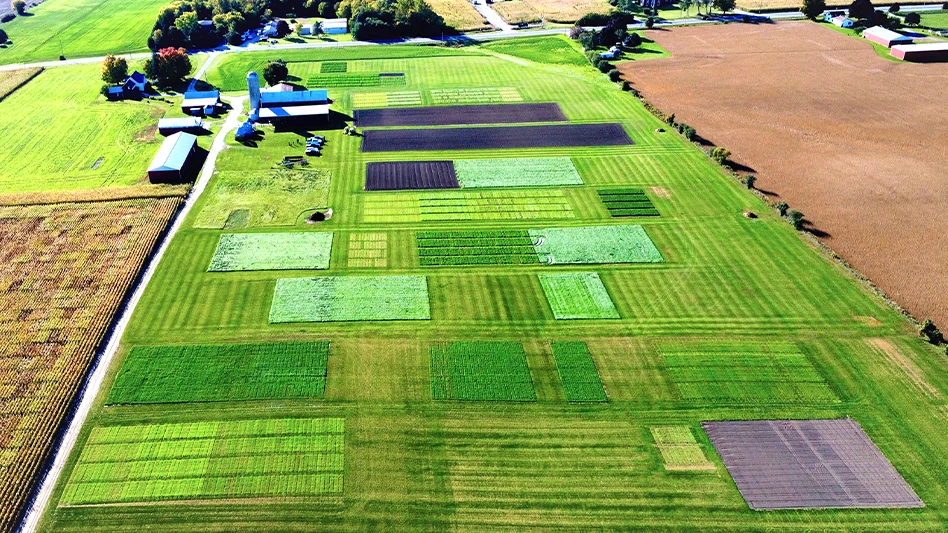

Ready to grow your team? Nice. A series of thoughtful questions can help you make the most of hiring opportunities. What is your team doing well and where are your challenges? How can your next hire make the team stronger? How can a new person be placed in a position to succeed? These answers can guide you toward the ideal candidates.
At Midland Hills Country Club, in Roseville, Minnesota, culture is the foundation of everything they do. The omnipresence of this culture makes it easier to determine who is likely to be a good fit. “High achievers move up the proverbial ladder quickly,” superintendent Mike Manthey says.
The Midland Hills maintenance crew consists of three assistants and two equipment managers who work full-time. The seasonal staff numbers 22 with three of those workers being year-round. They are culturally diverse with individuals representing Ecuador, Mexico and Russia in addition to the United States. One staff member lives only a few blocks away.
The team is also diverse in age and experience, from young new hires to the lead equipment manager, an industry veteran with an incredible tenure of 40 years. “We hired six individuals last fall who have embraced the culture and opened the eyes of established seasonal staff with their work ethic,” Manthey says. They have quickly garnered responsibilities.
It helps that Midland Hills is a 15-minute drive from downtown Minneapolis and not much farther from St. Paul. There is a large population of workers to draw from. The setup is different at Highlands Country Club, in Highlands, North Carolina, where most of the staff drive more than 30 minutes to get to work.
“Our labor pool is more like a labor puddle,” says Brian Stiehler, the scenic club’s superintendent since 2001. “Highlands is a mountain community, a second-home community and a very affluent community. It’s a challenge to find workers locally.”
Several people on the crew have been there as long as Stiehler and a few have been there for less than five years. Caring for this scenic 18-hole property covered in bentgrass and Poa annua, there are 17 year-round staff with the head count rising to 30 in the summer. College and high school students round out the team, as well as five H-2B employees.
While the commute is a consideration, culture and compensation are the primary factors in hiring, attracting and retaining labor. People want to work somewhere that is a good fit and they want to be well compensated for their commitment and effort. At Highlands, “We are paying more than most other businesses in the area,” Stiehler says. “Everyone is making more than $20 per hour.”
They also keep a close eye on the clock. People know their schedules, working eight-hour days, 12 days on and two days off. “We limit overtime because the staff appreciates that,” Stiehler says. The consistency yields a happier workforce and it’s easier to stay on budget. Overtime is costly. Mastering the labor budget also helps with hiring decisions.
Do you need another person, or will overtime cover? How does the current staff feel about overtime? Do you prefer a large or a lean operation? How is the total compensation presented, and how does it compare including wages, vacation, continuing education, health insurance, a 401(k) and other benefits?
“I’m proud that our membership values our department,” Manthey says. “They want to interact with us on-course and learn about what we do. It’s a club-wide culture to value your staff, get to know them and treat them like friends.” This is tangibly demonstrated in how employees are compensated.
“We invest in staff personally and professionally,” Manthey says. “The most tenured employees have six weeks of vacation. According to the new federal law, new employees accrue personal time off after two weeks of employment. Seasonal staff have benefits: 401(k) with match and personal paid time off. Staff can volunteer at big golf tournaments and further their education. This human-capital thought process translates to high retention levels.”
Aiming for high retention levels is a hiring strategy. With success, less hiring is necessary. The result is a more highly trained workforce.
Step-by-step
Before new hires can become retained staff they have to be attracted to vacancies. Online resources like Indeed, TurfNet and ZipRecruiter can help advertise a position. Social media can be your friend. Ads can be placed in community publications, on bulletin boards, in property communications or shared through high school or college guidance departments. (Pro tip: high school athletes are great workers if you can be flexible with their training schedules.)
Developing a pipeline with the nearby vocational programs or technical schools is also a good idea. For positions requiring more responsibility, consider specialized recruiting organizations such as Tyler Bloom Consulting, Denehy, Aspire Golf Consulting or Kopplin Kuebler & Wallace. Assistants and equipment technicians often submit résumés and cover letters.
After you connect with a candidate, what do you look for?
“Someone reliable with a good attitude,” Stiehler says. “I care less about background unless we are discussing being an assistant superintendent when the education is required.”
Educational requirements vary depending on the position and the operation but there has been a distinct shift away from hiring for technical skills while seeking beneficial soft skills. “The days of pounding someone into a shape that you desire are over,” Manthey says. “Practicing getting a read on people is something we work on. Evaluating their feedback when introducing them to our program is important.”
Trust your instincts. “We focus on the soft skills and candidates show us who they are when talking about those skills,” Manthey adds. “Every potential candidate speaks with existing staff whenever possible. It might only be for a few minutes, but their instinctive input is valuable.” People naturally want to hire others who will contribute to the work they care about.
Once hired, empower people to succeed. Train and retain them and let them help recruit. It’s cyclical. “Our assistant superintendents, Mark Ries, Tina Rosenow and Justin Hemauer, shine at this,” Manthey says. “Tenured staff share the training and if a new hire has a high ceiling, they get more technical.
“Proper introductions, getting people set up with uniforms and PPE, making sure they know you are investing in them integrates them into the team right away. Remind them the entire staff is on property and to seek them as a resource if there is a question. A golf course can feel big to a new hire and maintaining contact makes them more comfortable.”
Part of that comfort is feeling valued. “When people come to work here they are treated like professionals,” Stiehler says. “This is not just a job. It’s not just something to do, it’s something people can invest their talent in. Our staff have access to continuing education and can get their spray licenses and other certifications. Engaging people leads to ownership. Give someone a career, not just a job.” In other words, hire like you mean it.
“This is why we find people through word of mouth,” Stiehler says. “If you work here, you are going to be respected and get good benefits. We make the work fun. We create a culture that perpetuates itself.”
And there are more benefits to the right culture. “People share opportunities with their acquaintances,” Stiehler says. “When your staff recommends someone for a job, they ensure that the arrangement works. It’s a good way to attract qualified people.”
When people are hired and stay, the team can work together toward common goals. Transparency in every aspect of the operation is attractive to staff and helps new hires. Let them know what is coming, what calendar events might require some extra hours and preparation, and if there is any property-wide information that can affect them. “I remember being treated on a strictly need-to-know basis,” Stiehler says. “That is frustrating as an employee.”
Transparency is evident to new hires. So is an effort to get to know them. “I am a certified practitioner of the Meyers-Briggs Type Indicator test and I administer this personality assessment when someone starts work,” Stiehler says. “Learning this information helps me determine how to help them succeed. The fun part of the Meyers-Briggs is that there are different kinds of games you can play with it, so we do that throughout the year, along with safety training and other team-building activities.” Hire to make your team stronger and don’t hesitate to integrate new teammates.
Midland Hills has also found success from personal recruiting. “We provide cash incentives for staff to bring in new people,” Manthey says. “Staff get a bonus after the new hire has worked for a month and another if their recruit finishes the season. Some of our staff have earned a few thousand dollars by recruiting quality individuals. It works even better with cash. There’s something special about a handful of Ben Franklins! For the first time in years, we are fully staffed.”
Hopefully the labor challenges are easing. “A few years ago, we were just trying to hire bodies to operate equipment. Now we’re refining the staff based on their skill level and effectiveness of each task,” Manthey says.
Every team can get there with a strong culture and fair compensation. With every hiring opportunity, start by asking the right questions, take it step-by-step and integrate candidates quickly for hiring that helps.

Explore the March 2024 Issue
Check out more from this issue and find your next story to read.
Latest from Golf Course Industry
- GCSAA announces Grassroots Ambassador Leadership Award recipients
- Reel Turf Techs: David Gummo
- PBI-Gordon promotes two to executive level
- VIDEO: A First Green morning
- Bloom Golf Partners adds HR expert
- Seeking sustainability in Vietnam
- Kerns featured in Envu root diseases webinar
- Toro continues support of National Mayor’s Challenge for Water Conservation





